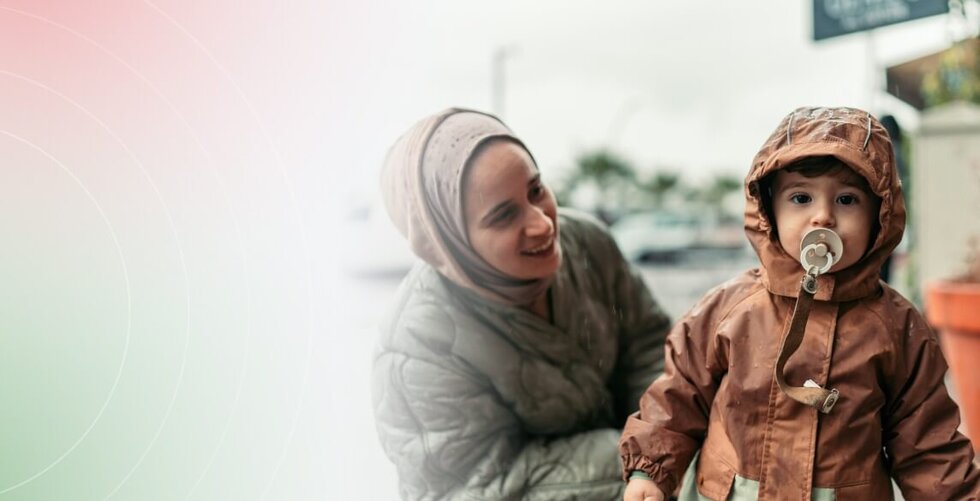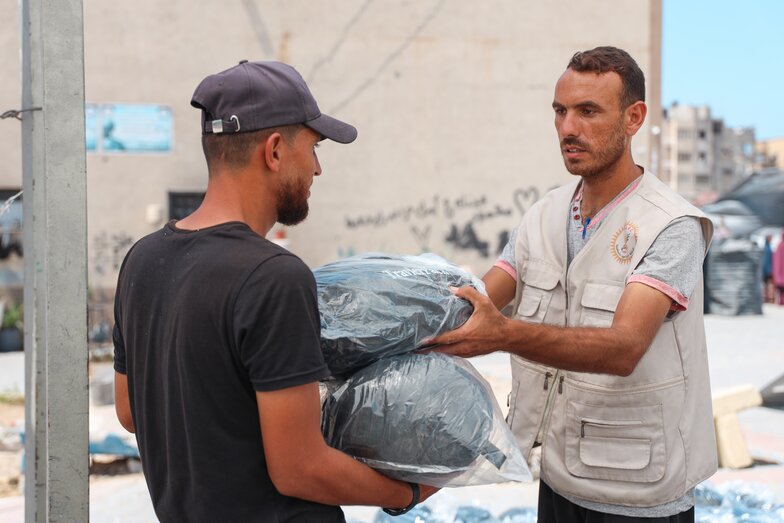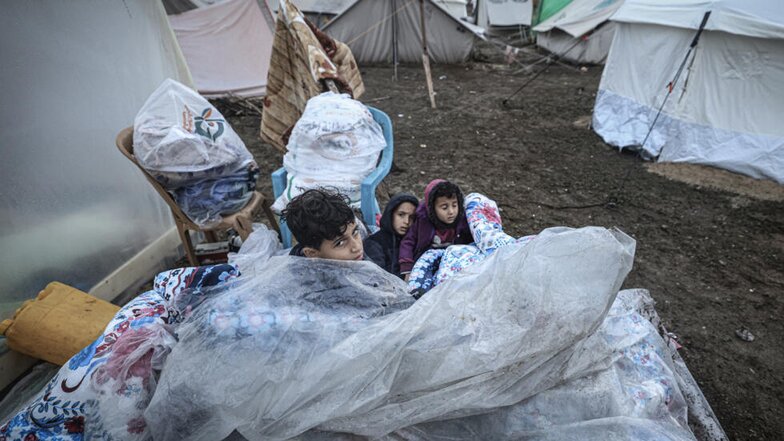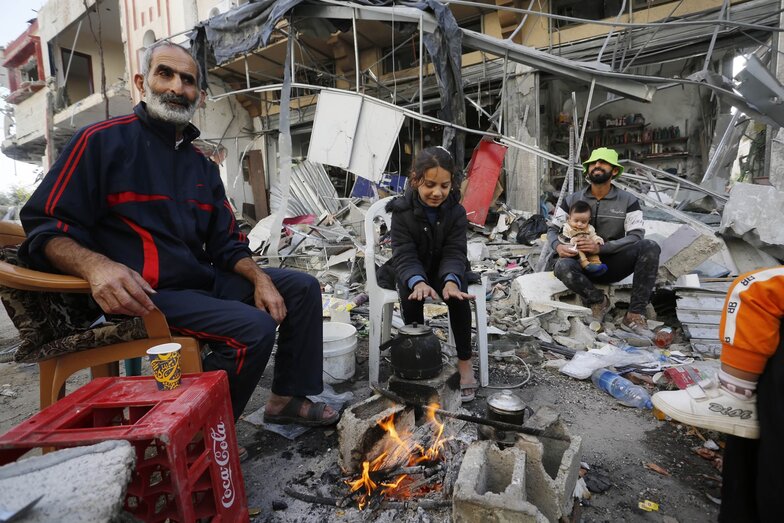Home
>
Donate clothes to Gaza
Oct 7, 2024
Donate clothes to Gaza
By Yusuf Jaffar
•
6 min read

Active campaigns to donate clothes to Gaza
The LaunchGood campaign, "Help Gaza's Children & Orphans Celebrate Eid," aims to provide new clothes and organize celebratory events for 500 children and orphans in Gaza. Despite logistical challenges in Gaza, the campaign ensures secure and impactful giving and any excess funds will be used to meet other urgent needs in the region.
The LaunchGood campaign "A Hunger Crisis for Refugees in Greece" aims to provide emergency winter aid, including food, sleeping bags, tents, and hygiene products, to refugees fleeing war. These refugees face dire conditions in overcrowded camps or homelessness, exacerbated by a lack of basic supplies and harsh winter weather.
The "Gaza's Winter Appeal for Families in Need" campaign provides essential winter relief, including temporary shelters, winter clothing, food baskets, and hot meals for displaced families in Gaza. The appeal also supports orphan sponsorships, helping those most vulnerable during the harsh winter months.
This page will be updated with more campaigns as additional charities launch fundraising efforts for winter relief.
Why donating clothes to Gaza matters

Donating clothes to Gaza is essential due to the ongoing humanitarian crisis in the region. Here's why your contribution makes a significant impact:
Humanitarian need
Basic necessities: The conflict in Gaza has disrupted daily life, leaving many without access to essentials, including clothing. The ongoing siege and military operations have displaced families, making donations crucial for survival.
Vulnerable populations: Children are particularly affected, with nearly 60% of Gaza's population under the age of 18. Clothing donations help protect them from harsh weather and provide a sense of dignity and normalcy.
Community and global solidarity
International support: Clothing donations represent global solidarity with the people of Gaza, showing that international communities care and are willing to help in meaningful ways.
Collaborative efforts: Aid organizations work with local partners to ensure donations reach those in need, overcoming logistical challenges to provide effective support.
Does Gaza need clothing aid?
Displacement Crisis
Approximately 1.9 million Palestinians in Gaza have been internally displaced due to Israeli military operations and bombardments. It accounts for over 80% of Gaza's population, underscoring the immense scale of the crisis. The widespread destruction of housing and infrastructure has left many without safe shelter, forcing them into overcrowded and makeshift living conditions.
Humanitarian Needs
The ongoing blockade and conflict have led to catastrophic humanitarian needs. There is an acute shortage of food, clean water, medical supplies, and essential services, placing the entire population at risk of famine and disease. Aid delivery is severely restricted, with only a fraction of the necessary supplies reaching those in desperate need.
The ongoing conflict in Gaza has severely impacted the lives of millions, particularly the residents of refugee camps. These camps, home to some of the most vulnerable populations, are facing immense challenges due to overcrowding, lack of resources, and restricted aid deliveries. The latest available data on the eight main refugee camps in Gaza highlights the scale of the humanitarian crisis:

Jabalia Camp: The largest camp, housing 116,011 Palestinian refugees registered with UNRWA. Overcrowding and insufficient services contribute to the dire living conditions.
Beach (Al-Shati) Camp: This camp accommodates 90,173 refugees, making it one of the most densely populated areas in Gaza.
Deir el-Balah Camp: While specific population data is unavailable, this camp, like others, suffers from limited resources and inadequate shelter.
Bureij Camp: With more than 34,000 refugees, this camp continues to face shortages of essential supplies, exacerbating the humanitarian crisis.
Maghazi Camp: Housing 33,255 Palestinian refugees; Maghazi struggles with overcrowded living conditions and lack of basic services.
Nuseirat Camp: With 85,409 registered refugees, Nuseirat camp is another critical area where humanitarian aid falls short.
Khan Younis Camp: The 88,854 refugees in Khan Younis are grappling with limited access to food, clean water, and medical supplies.
Rafah Camp: The second-largest camp, home to 133,326 refugees, Rafah is a reflection of the overwhelming needs in Gaza, where resources are strained, and aid deliveries remain inconsistent.
UNRWA Refugee Data – Jabalia Camp Refugees
UNRWA Refugee Data – Beach Camp Refugees
Refugee Population – Bureij Camp Refugees
Harsh Weather Conditions to Watch Out for in Gaza
Gaza faces several severe weather conditions that further strain its already fragile humanitarian situation:
Extreme Cold
During winter, Gaza experiences uncharacteristically low temperatures, sometimes dropping to near zero degrees Celsius at night. These cold waves, combined with frequent power outages, severely disrupt heating systems, making it difficult for residents to stay warm and safe.
Heavy Rain and Flooding
Gaza is prone to heavy rainfall, often exceeding average precipitation levels, which frequently leads to flooding. These floods can displace thousands of people, worsen living conditions, and damage the limited infrastructure in the region, creating additional hardships for the population.

Will my donated clothes safely reach Gaza?
Aid Access to Gaza: Challenges and Limitations
Aid is currently allowed into Gaza, but it faces significant challenges and limitations. The Rafah crossing, which is not controlled by Israel, remains a vital link for aid delivery. However, the amount of aid entering Gaza is far below what is needed.
Limited Aid Deliveries
Save the Children reported that only a small number of aid trucks have been permitted entry, and these do not meet the colossal scale of needs in Gaza. The Israeli blockade has severely restricted the flow of aid, with reports indicating that 83% of required food aid does not reach Gaza.
Post-Conflict Aid Resumption
While some aid deliveries resumed after October 21, 2023, the flow remains sporadic and is still far below pre-conflict levels. The United Nations has stated that Gaza requires approximately 500 truckloads of assistance daily to meet basic needs, but this target is not being met.
Logistical Challenges
Efforts to deliver aid are further complicated by logistical hurdles, including fuel shortages and security concerns. Despite these obstacles, organizations like Anera and Oxfam continue to collaborate with partners to deliver essential supplies such as food, water, and medical assistance.
Save the Children – Gaza Aid Trucks Entry
The Guardian – 83% of Required Aid Doesn't Reach Gaza
United Nations – Aid Resumption After October 2023
IRC – Gaza Requires 500 Truckloads of Aid
Additional Ways to Support Gaza Beyond Clothing Donations
Join our newsletter
Join our community of 700k subscribers
Featured fundraisers
Discover 1.5K more
Explore more
